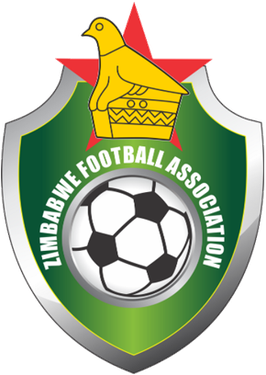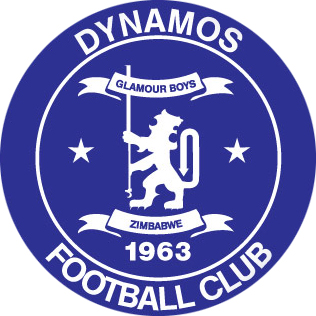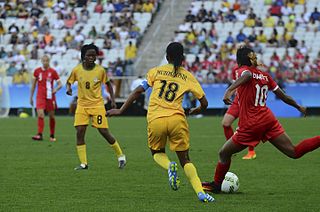Related Research Articles

Harare, formerly Salisbury, is the capital and largest city of Zimbabwe. The city proper has an area of 982.3 km2 (379.3 sq mi), a population of 1,849,600 as of the 2022 census and an estimated 2,487,209 people in its metropolitan province. The city is situated in north-eastern Zimbabwe in the country's Mashonaland region. Harare is a metropolitan province which also incorporates the municipalities of Chitungwiza and Epworth. The city sits on a plateau at an elevation of 1,483 metres above sea level, and its climate falls into the subtropical highland category.

Great Zimbabwe was a city in the south-eastern hills of the modern country of Zimbabwe, near Masvingo. It was settled from 1000 AD, and served as the capital of the Kingdom of Zimbabwe from the 13th century. It is the largest stone structure in precolonial Southern Africa. Construction on the city began in the 11th century and continued until it was abandoned in the 16th or 17th century. The edifices were erected by ancestors of the Shona people, currently located in Zimbabwe and nearby countries. The stone city spans an area of 7.22 square kilometres (2.79 sq mi) and could have housed up to 18,000 people at its peak, giving it a population density of approximately 2,500 inhabitants per square kilometre (6,500/sq mi). The Zimbabwe state centred on it likely covered 50,000 km². It is recognised as a World Heritage Site by UNESCO.

Zimbabwean music is heavily reliant on the use of instruments such as the mbira, Ngoma drums and hosho. Their music symbolizes much more than a simple rhythm, as the folk and pop style styled music was used as a symbol of hope for Zimbabweans looking to gain independence from Rhodesia. Music has played a significant role in the history of Zimbabwe, from a vital role in the traditional Bira ceremony used to call on ancestral spirits, to protest songs during the struggle for independence. The community in Zimbabwe used music to voice their resistance to their oppression, as one of the only weapons they had available to fight back with. In the eighties, the Music of Zimbabwe was at the center of the African Music scene thanks to genres such as Sungura and Jit. However, several performers were banned by state TV and radio leading to the closing of several music venues.

Gweru, originally known as Gwelo, is a city in central Zimbabwe. It is on the centre of Midlands Province. Originally an area known to the Ndebele as "The Steep Place" because of the Gweru River's high banks, in 1894 it became the site of a military outpost established by Leander Starr Jameson. In 1914 it attained municipal status, and in 1971 it became a city.

The Zimbabwe national football team represents Zimbabwe in men's international football and is controlled by the Zimbabwe Football Association (ZIFA), formerly known as the Football Association of Rhodesia. The team has never qualified for the FIFA World Cup finals, but has qualified for the Africa Cup of Nations five times. Zimbabwe has also won the COSAFA Cup a record six times. The team represents both FIFA and Confederation of African Football (CAF).
The Zimbabwe Rugby Union was founded in 1895 as the Rhodesia Rugby Football Union, and is the governing body of rugby union in Zimbabwe.

St. George's College is a private Jesuit boys high school in Harare, Zimbabwe. The school, colloquially referred to as Saints or George's, is located in Borrowdale, a Harare suburb. The land was donated to the Jesuits. This led to the relocation of the school site from Bulawayo to Harare, the foundation of St. George's College. On the same site, a preparatory primary school was established, called Hartmann House (HH). This site is next to the presidents house, which acts as the official Zimbabwe State House. The school motto is Ex Fide Fiducia, a Latin phrase meaning "From Faith Comes Confidence".

Dynamos F.C. is a Zimbabwean professional football club based since 1963 at Rufaro Stadium, Mbare, Harare. The team currently participates in Zimbabwe's top-tier, the Premier Soccer League. Founded in 1963 after a merger between two lesser teams in Mbare, Harare Township, Rhodesia, Dynamos quickly became one of the strongest sides in the Rhodesian league, and by the attainment of the independence of Zimbabwe in 1980 had become the country's most successful football team, having won six national championships. Dynamos have since won 22 league championships – a national record – and at least 16 trophy/cup honours.

The Zimbabwe Football Association (ZIFA) is the governing body of football in Zimbabwe. It is responsible for organising national football competitions in Zimbabwe and managing the Zimbabwe national football teams.

Triangle is a small town in Masvingo Province, Zimbabwe, and is located 125 km south-east from Masvingo, between Ngundu Growth Point and Chiredzi. The town is located in the district of Chiredzi, one of the seven in Masvingo Province.

The Venḓa are a Bantu people native to Southern Africa living mostly near the South African-Zimbabwean border. The Venda language arose from interactions with Sotho-Tswana and Kalanga groups from 1400.

The Kenya national rugby union team, commonly known as the Simbas, is the country's national team managed by the Kenya Rugby Union. The team plays in red, green, and black jerseys with black or white shorts. The Simbas represent Kenya in the Africa Cup and various other tournaments across the continent. They currently rank 34 in the World Rugby Rankings and fourth in Africa. Kenya is yet to qualify for the Rugby World Cup.

Sport in Zimbabwe has a long tradition and has produced many world recognized sports names and personalities. Football is the most popular sport, although rugby union, cricket, tennis, golf, and netball also have a following, traditionally among the middle class and the white minority. Field hockey is also played widely.

The Kingdom of Zimbabwe was a Shona kingdom located in modern-day Zimbabwe. Its capital was Great Zimbabwe, the largest stone structure in precolonial Southern Africa, which had a population of 10,000. Around 1300, Great Zimbabwe replaced Mapungubwe as the most important trading centre in the interior, exporting gold to the Indian Ocean trade via Swahili city-states. The Zimbabwe state was composed of over 150 smaller zimbabwes and likely covered 50,000 km².

Nyasha Liberty Mushekwi is a Zimbabwean professional footballer who plays as a forward for China League One club Dalian K'un City.

The sport of football in the country of Zimbabwe is run by the Zimbabwe Football Association. The association administers the national football team, as well as the Premier League. It is the most popular sport in that nation. It was introduced to the country by the British colonialists by the end of the 19th century and quickly took hold.
St. Thomas Aquinas Primary School is a Catholic, independent, preparatory day school for boys and girls in Khumalo, Bulawayo, Zimbabwe. Founded in 1956 by the Dominican Sisters, the school is now under the oversight of a Board of Governors appointed by the Archbishop of Bulawayo.

Africans in Poland, also known as Afro-Poles or Afro-Polish, are citizens or residents of Poland who are of African descent. As of 2024, among European countries, the proportion of people from Africa is one of the lowest.
The 2018 Zimbabwe Premier Soccer League is the 39th season of top-tier football in Zimbabwe. The season was initially scheduled to begin on 10 March 2018, but was postponed to 17 March 2018. Herentals College, Bulawayo Chiefs, Nichrut F.C., and Mutare City Rovers were all promoted before the start of the season. The average attendance for a game in the 2018 Zimbabwe Premier Soccer League was 1,447.
Alec Mudimu is a Zimbabwean professional footballer who plays as a midfielder. He last played for Tunisian Ligue Professionnelle 1 club Olympique de Béja and the Zimbabwe national team.
References
- ↑ Thomas Chideu at National-Football-Teams.com